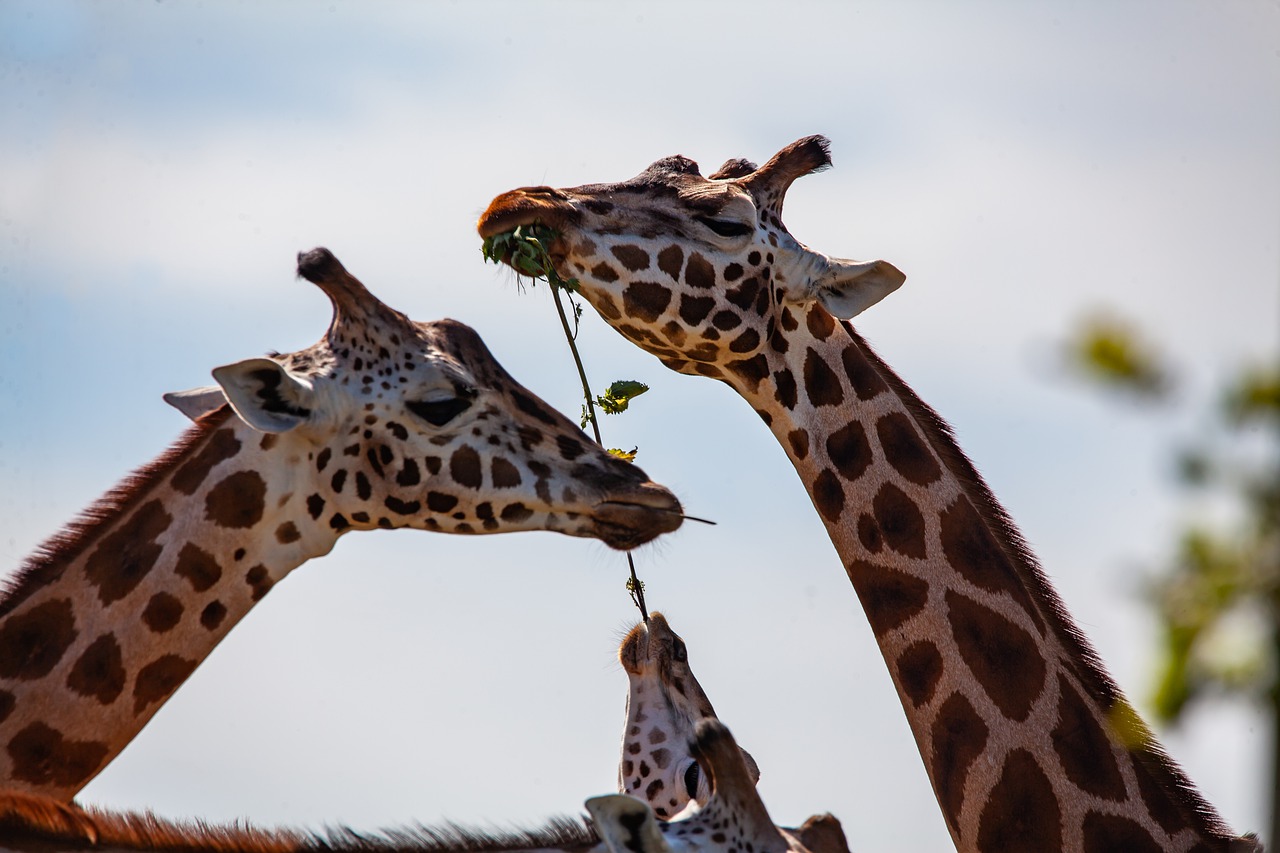However, researchers discovered data indicating that giraffes should be classified into four separate species: northern giraffe, southern giraffe, Masai giraffe, and reticulated giraffe, in the most complete examination of these animals to date.
They are the world’s highest mammals. They are specially equipped to reach foliage that other herbivores are unable to reach. When giraffes’ heads are abruptly elevated, lowered, or swung, unusually elastic blood arteries and specifically designed valves assist counteract the fast accumulation of blood (to prevent fainting). Their “horns” are knobs covered in skin and hair above the eyes that protect the head from damage. Their necks have the same number of vertebrae as ours (seven), but their bones are significantly enlarged, resulting in a neck length of 2.4 metres.
Giraffe sightings in Kenya and Tanzania’s Masai Mara – Serengeti environment
One of Africa’s most iconic safari experiences is seeing giraffes walking through the vast grasslands of the Masai Mara – Serengeti ecosystem. The Masai giraffe, which is native to this region of Africa, is sometimes substantially darker than other giraffe species. Its patches are unique vine-leaf forms with jagged edges, and the area between the patches is a creamy-brown colour.
Nyerere National Park (Selous Game Reserve), Tanzania
While giraffes are not seen in the southern Selous, they are so numerous in the reserve’s northern tourist circuit that it has been dubbed “Giraffic Park.” Boat rides on the Rufiji, a spectacular tropical stream teeming with hippos, crocs, and birds, provide an excellent opportunity to see giraffes drinking. This incredible feat of natural engineering necessitates the animal to spread its legs wide apart before cautiously lowering its lengthy neck until its head reaches the water.
Etosha national park, Namibia
The southern giraffe, Africa’s most numerous giraffe species, may be found in all of Southern Africa’s national parks and reserves, but as the saying goes, “location is everything,” and seeing a giraffe against the arid desert environment of Etosha National Park is a spectacular sight.
Southern giraffes have light brown patches that are unevenly notched and surrounded by a delicate cream colour, with irregular dots on their lower legs. In northwest Namibia, where it is very arid, they can be nearly colourless.
Murchison Falls National Park, Uganda
Around 1,250 Rothschild’s giraffes live at Uganda’s Murchison Falls, accounting for more than half of the world’s population of this confined subspecies. The giraffe herds here are among the largest I’ve seen, typically totaling 30 or more animals, and are a sight to behold as they march over the Borassus grassland in the park’s north. I’ve also spotted giraffes on boat rides along the Nile River to the foot of the park’s name-giving waterfall.
Amboseli National Park, Kenya
Amboseli is dominated by ashy plains and permanent marshes, and it is home to numerous enormous stands of umbrella thorn, a flat-topped acacia that is catnip to a hungry giraffe. The park’s main distinguishing feature is snowcapped Kilimanjaro, which climbs 5 kilometres above the plains and offers a spectacular picture backdrop when the giraffes and acacias line upright.
South Luangwa National Park
The endemic thornicroft giraffe, which is a subspecies found solely in South Luangwa, may be seen here. Walking is one of the finest methods to view animals in South Luangwa. Zambia, particularly South Luangwa, is often regarded as the greatest African nation for walking safaris.
Giraffe Centre Nairobi
This family-friendly breeding institution, located in the green northern suburbs of Nairobi, Kenya’s capital city, has played an essential part in the conservation of Rothschild’s giraffe. An elevated platform allows day visitors to come face to face with the world’s largest mammal and examine those long flirty brows up close. Breakfast at Giraffe Manor, the attached boutique hotel, is regularly disrupted by a curious giraffe sticking its head through the glass.
Kruger National Park
South Africa’s largest national park is well-known as a fantastic Big Five location, as well as one of the greatest spots in Africa to watch giraffes. It is designed for self-drivers who want to explore at their own speed and see the park’s habituated giraffes in action. Necking, a type of ritualized combat in which two males repeatedly strike each other’s necks to establish dominance, is an intriguing activity that may be observed.

